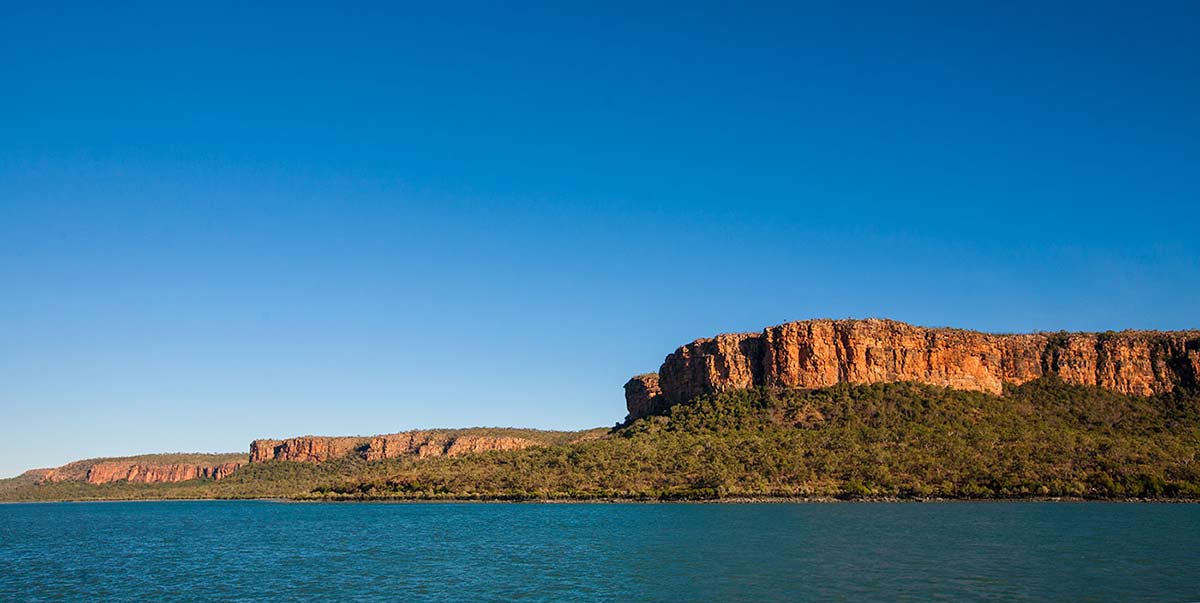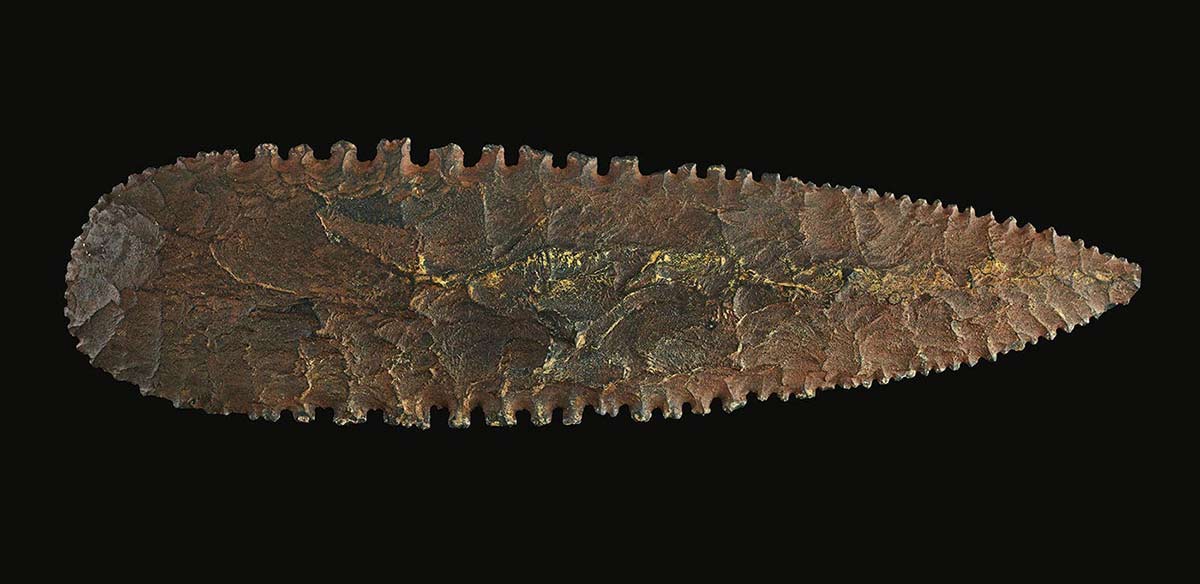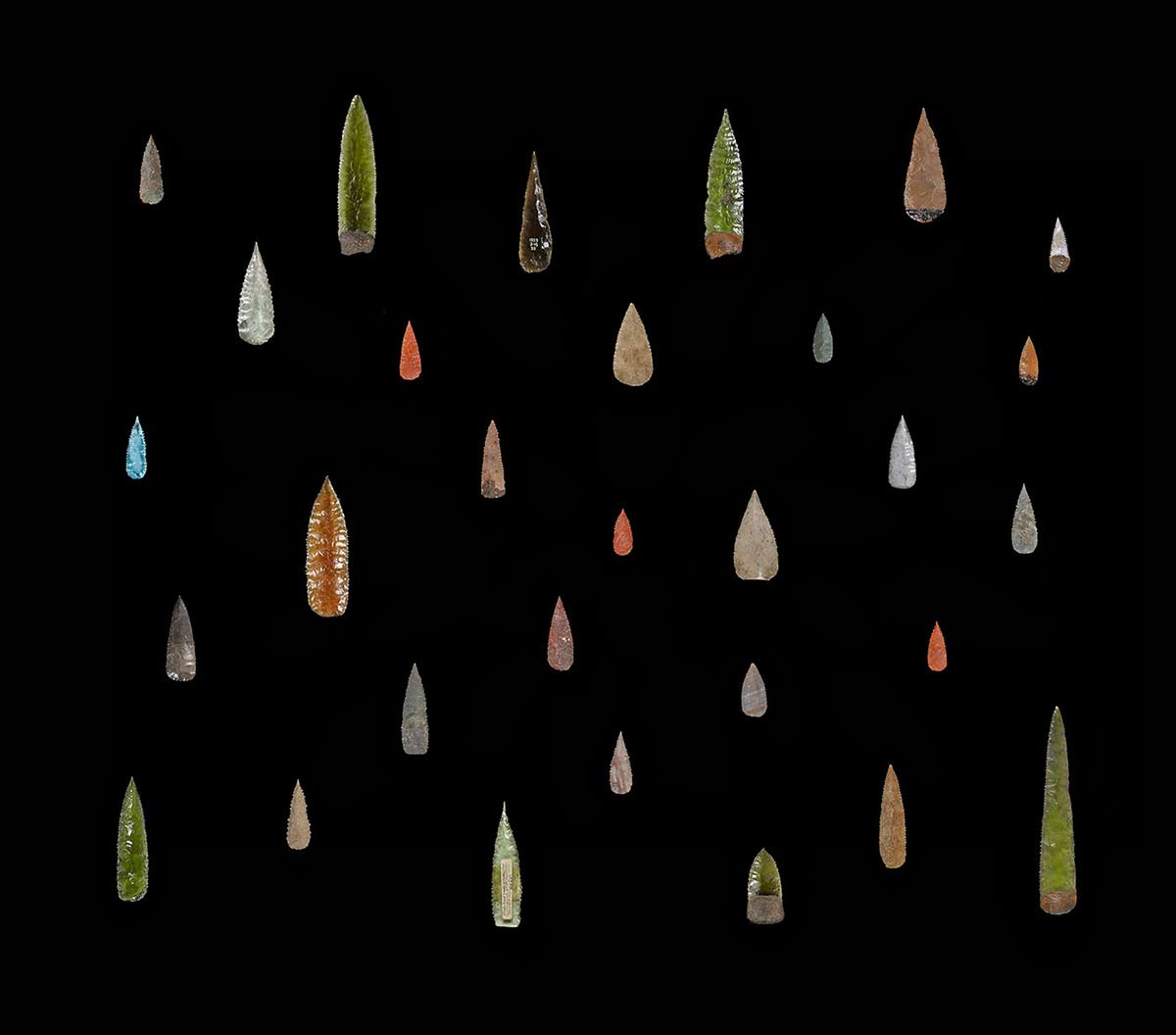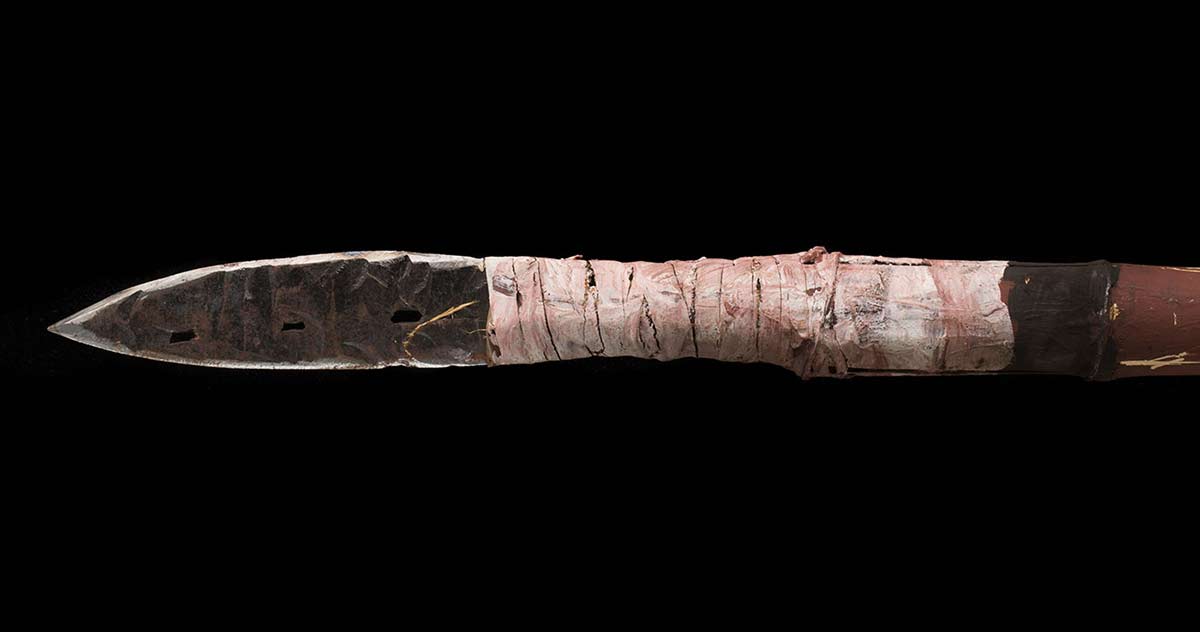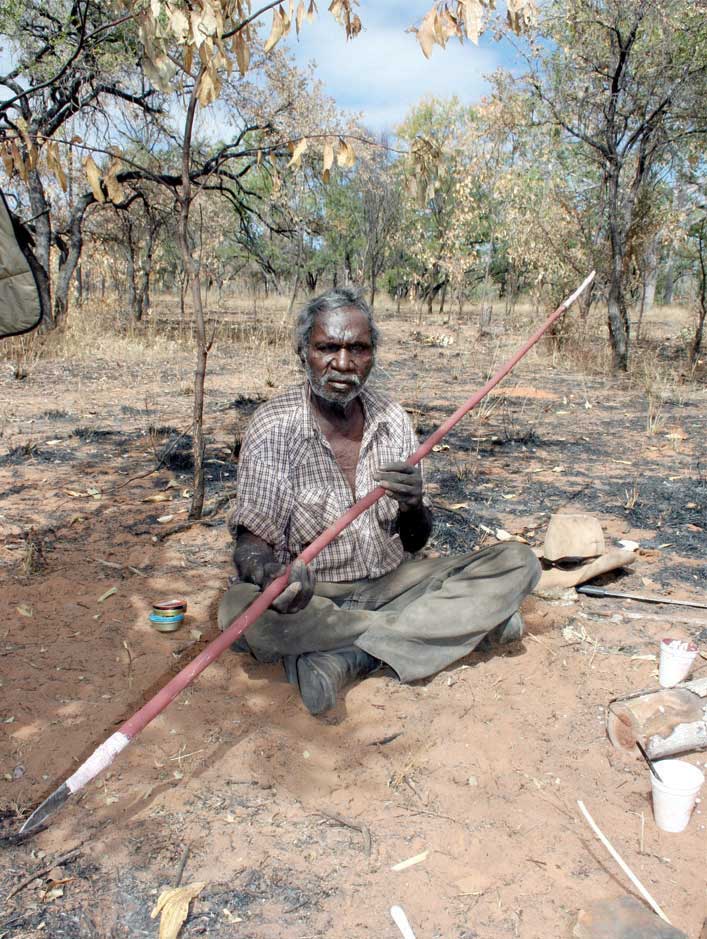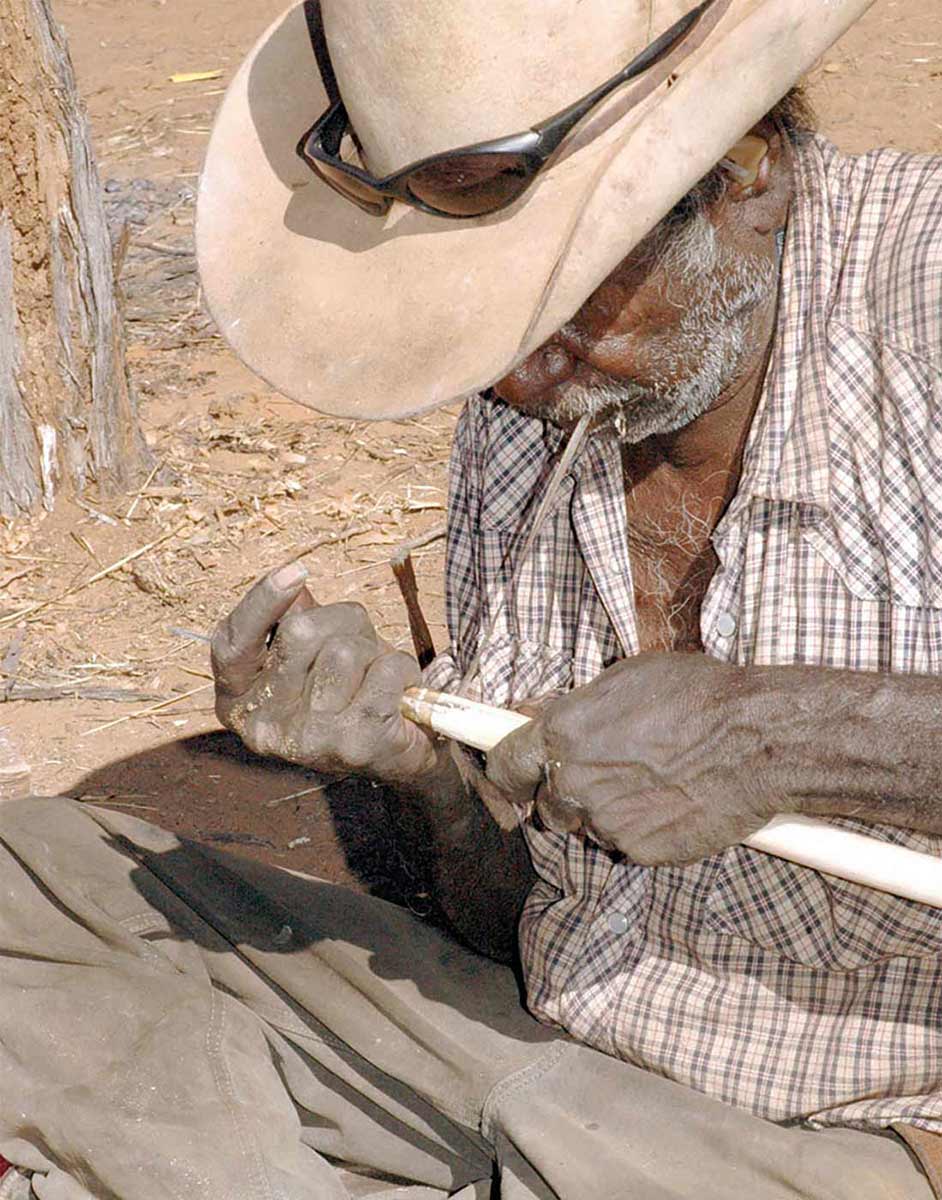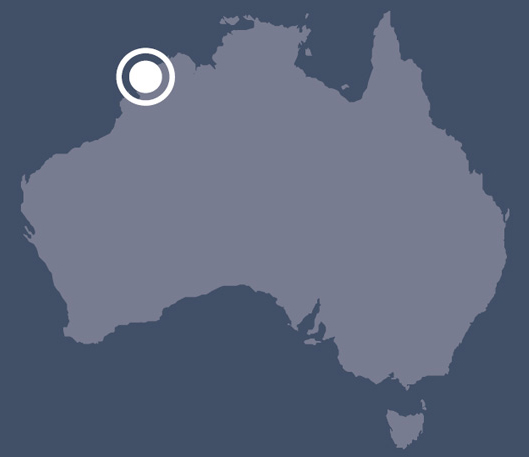
Worrorra country
The Worrorra people of the Kimberley were familiar with visiting outsiders.
Explore how an early encounter with a British exploration party broke down, the tradition of making spearpoints, and the adaptability of Kimberley culture.
Setting the scene
Warren Barunga, Worrorra traditional owner, 2015:
Hanover Bay — beautiful, it’s magic country. High red bluffs, that peak … especially when the sun gets up, when the sun rises you see the different colours. Just a magic place.
In 1821, Worrorra people looked out from the shores of Hanover Bay on the Kimberley coast to see HMS Bathurst sailing in. It was not the first visit by a foreign ship.
Warren Barunga, Worrorra traditional owner, 2015:
It was actually the Dutch who first came to our coast … and we did a lot of dealing with the Macassans as well.
The meeting with the Bathurst’s crew began peacefully.
Phillip Parker King, ship’s commander journal, 7 August 1821:
On our presenting them with some of the fish that we had caught … they dropped their spears and immediately returned us something in exchange; one gave a belt ... and the other a club.
But soon after the exchange of goods, a British officer was speared in the back. The British retaliated by shooting a local man in the shoulder and then left. In the panic of the moment, it is likely that neither side understood why the encounter had unravelled.
Yalga (spearpoint)
This stone spearhead, known as a Kimberley point, was collected on the day Worrorra people met the crew of HMS Bathurst, led by Phillip Parker King, at Hanover Bay in 1821.
Butcher Wise, senior Walmajarri lawman, 2015:
They were like gold, that one.
When King collected this spearhead he was curious about how it was made and wrote in his journal in 1821:
Both edges were serrated in a most surprising way; the serratures were evidently made by a sharp stroke with some instrument, but it was effected without leaving the least mark of the blow.
Worrorra traditional owner Warren Barunga has an explanation for the serrated edges and the art of making the spearpoint:
They used kangaroo bone to flake … to get those little jags. It’s an art. They put paperbark down so it doesn’t break … it dampens the strike when they flake … I can’t describe the feeling — to see something so ancient and a sacred item to the individuals who made them — they put their heart and soul into making these tools.
‘Kimberley points’ are a distinctive form of spearhead, with serrated edges that Kimberley craftsmen have fashioned with extraordinary skill.
Wayne Barunga, Worrorra traditional owner, 2014:
Men were always collecting stone for spearpoints. Men collect while walking — they were always looking down. They would look at the shape to see if they can flake or make it.
Kimberley points
Sixty years after Phillip Parker King’s visit, pastoralists moved into Kimberley country, taking land but bringing with them new materials.
The people of the Kimberley quickly grasped the potential of materials such as glass and porcelain, which were easier to work with, yet still gave a very sharp edge. These glass or ceramic points were used in ceremonial exchange or as tourist objects. Metal was also used to make spearheads.
Warren Barunga, Worrorra traditional owner, 2015:
You can see how the bushmen kept up. They found that glass was easy to flake, then one day discovered steel — well, wow — and they started making things like [Nuggit Gooditt’s horseshoe spear].
Galamba (spear)
Nuggit Gooditt made this spear, which has a metal spearhead made from a horseshoe, during a living heritage bush camp held at Jingeengardi (Wire Yard), on Gibb River station in the Kimberley.
Leah Umbagai and Mary Anne Jebb, Jingeengardi (Wire Yard) Bush Camp, Mowanjum Spirit of the Wandjina Aboriginal Corporation on behalf of Worrorra, Ngarinyin and Wunambal peoples, 2008:
The reason we had the camp was to get out on country ... to share knowledge and culture ... Women and girls practised spinning, string-making and making bark cradles. Men and boys practised spear making, preparing kangaroo sinew, didgeridoos, spear-throwers and gums. Everyone practised language words for plants trees and objects ... Night time was ... a time for storytelling.
What do you know about Hanover Bay?
More activities
Activity:
Create a poster about a significant object, inspired by this quote from Worrorra Traditional Owner Warren Barunga:
I can’t describe the feeling — to see something so ancient and a sacred item to the individuals who made them — they put their heart and soul into making these tools.
Why do you think seeing the yalga (spearpoint) is so significant for Warren? Have you ever put your heart and soul into the making of something? Do you own something that shows the heart and soul of the maker? Can you think of objects that your community values as precious? Create a poster that shows one object and describes the ways it is significant.
Activity:
Traditionally, Worrorra people used stone to make yalga, pictured above. Once pastoralists moved to the Kimberley, bringing new materials with them, Worrorra people began to use glass, porcelain and metal. They made spearheads for ceremonial exchange and as tourist objects. What does this tell you about Worrorra culture?
Explore more on Community stories
